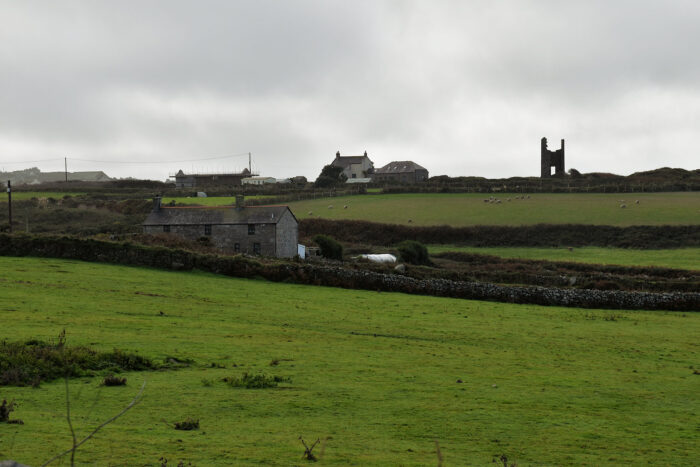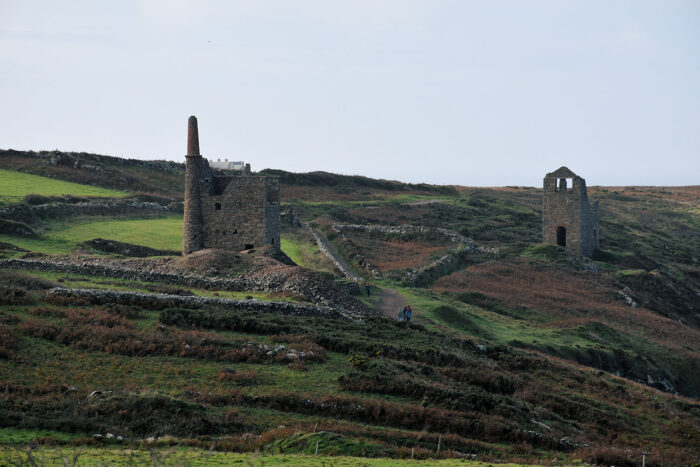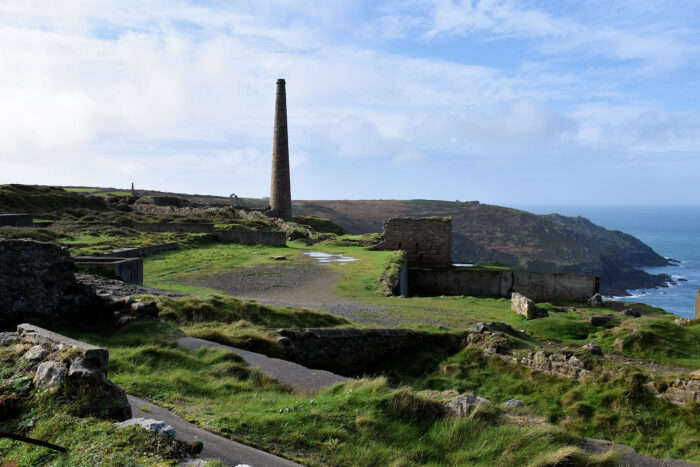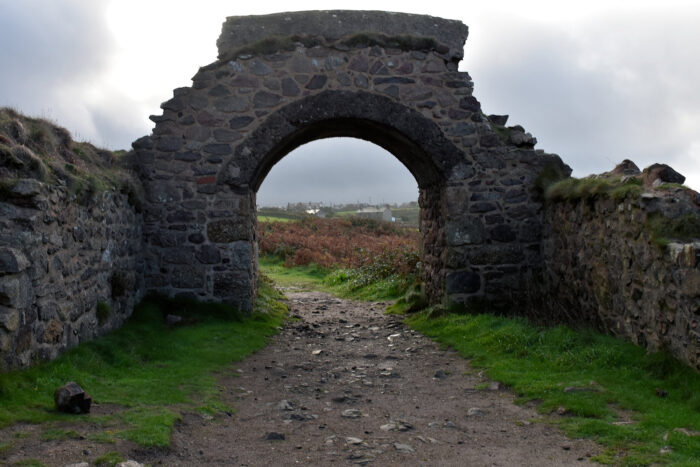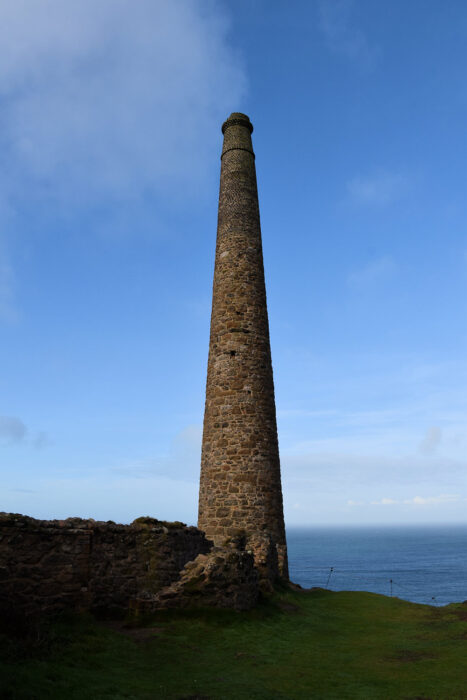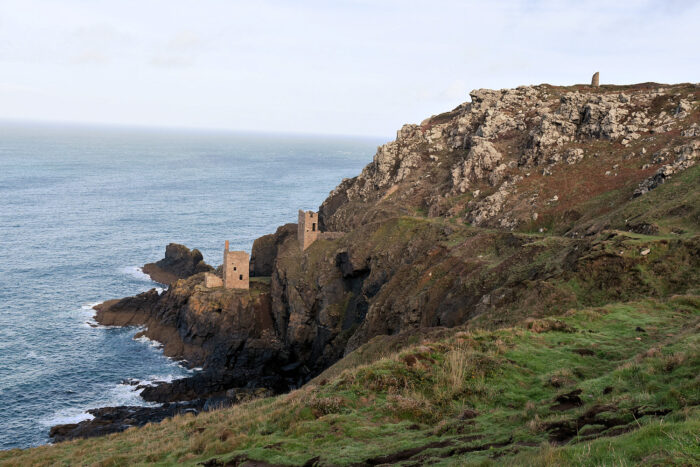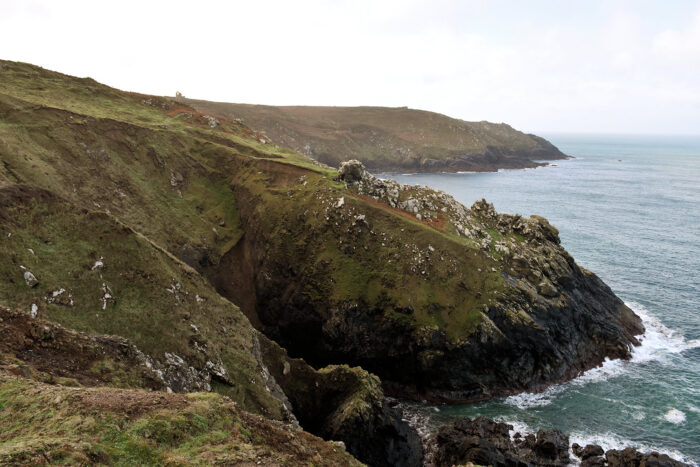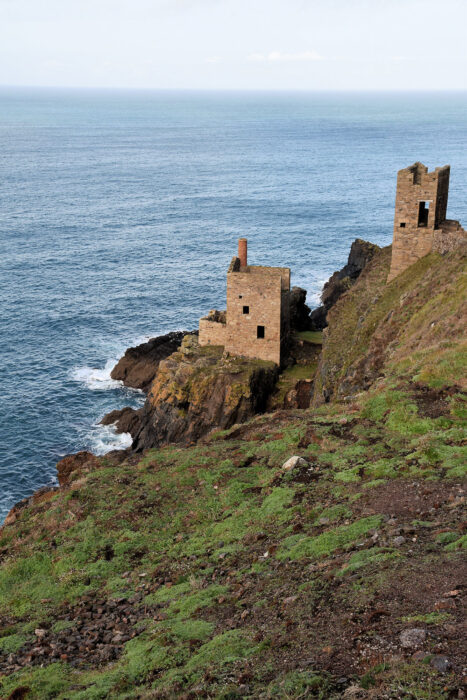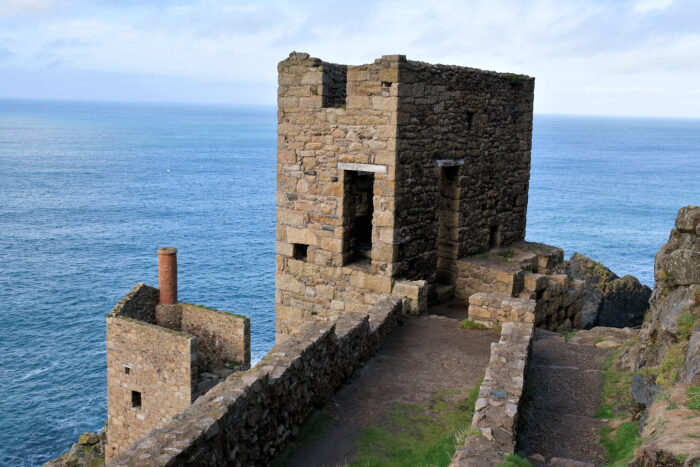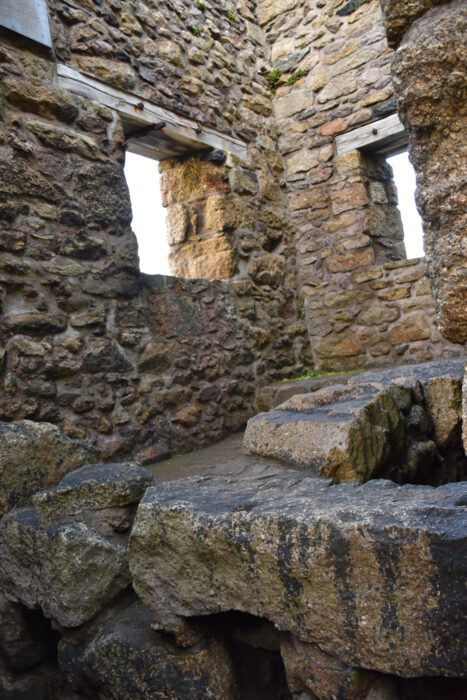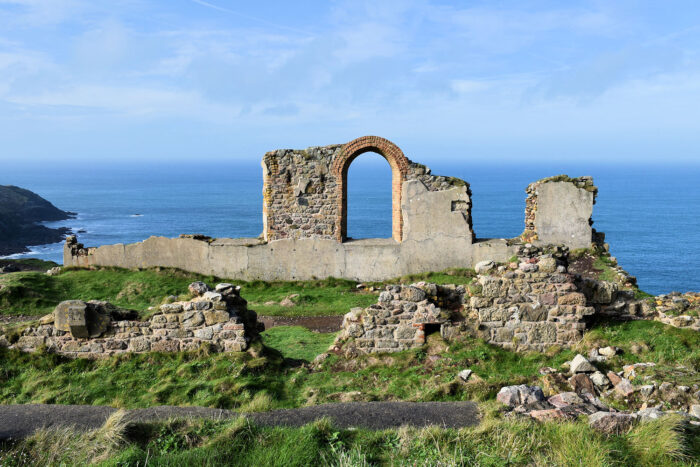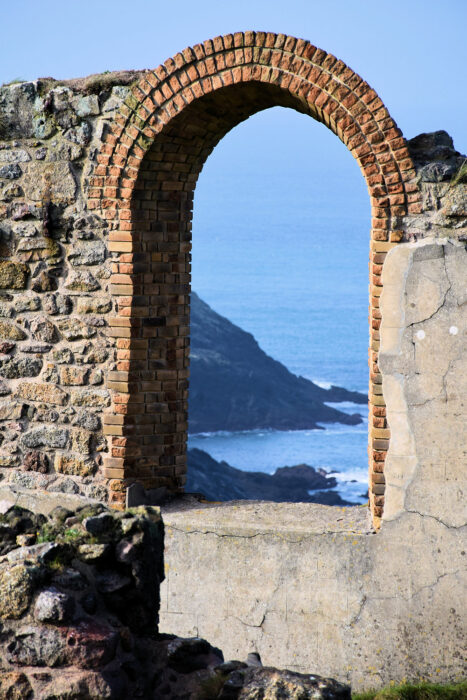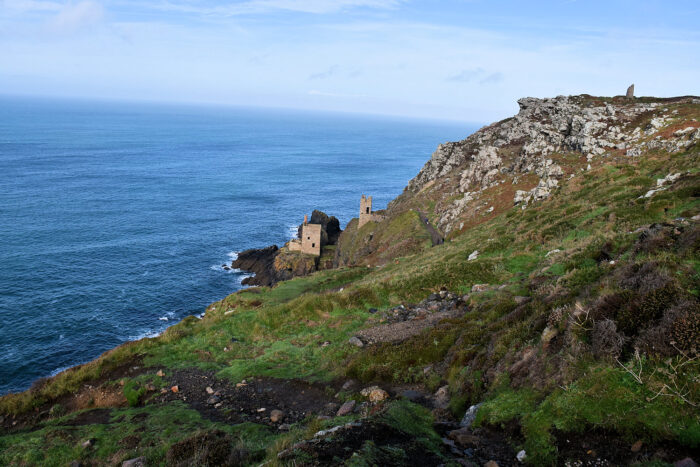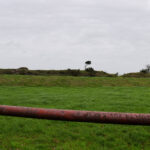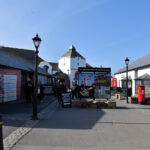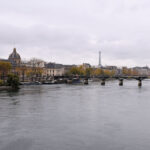Yesterday the forecast was overcast in the morning with heavy rain starting around noon. I had my doubts about going all the way to the other coast to check out Botallack. Even if it wasn’t going to be raining in the morning, overcast and grey wasn’t going to be good for the photos I wanted to take. Maybe it could wait until the next day. Which seemed a waste of my second last day here.
But “the other coast” is only 25 minutes away by bus, so I could go for a look and if necessary, come back!
It is rather cool to be sitting on a bus, doing a bit of reading, checking the map, then to look out and see these odd shaped ruins.
They don’t know when mining first started in this area. Maybe not long after people first looked at rocks and thought they could do something more useful than just banging them together, which lead to the Bronze Age. (Do you ever wonder how someone came up with the idea of melting stone to make weapons and other cool stuff? And did they call it melted stone at first?)
The Crown Mines at Botallack began around 1721. In 1858 the Boscawen Diagonal Shaft was dug to access [tin] lodes over 1/3 mile under the sea bed. Famous dignitaries came to see this innovative shaft and take away souvenir pieces of minerals, among them the Prince and Princess of Wales, Prince Arthur, and author RN Ballantyne. In fact, so many gentry decided to visit that the constant presence of souvenir-hunting visitors became a nuisance and a safety hazard to the miners, and an entrance fee of half a guinea was imposed, with the proceeds donated to a relief fund for widows and injured miners.
Britain Express
Did you see that bit “under the sea bed”? The mine shafts ran UNDER the sea.
Above these dressing floors stand the ruins of a 1906 arsenic works. Tin from Botallack contained traces of arsenic. Tin ore was roasted to extract arsenic gas, which condensed on the arched roofs of condensing chambers. Small boys were sent into the condensing chambers to scrape the dried arsenic off the chamber walls.
Britain Express
The weather was almost perfect, for taking photos and for scrambling around rocky hillsides.
Can you see the path that runs down to the first of the engine houses there? Yes, there is a path. It starts on the far right about half way down. Whoever built that has a stranger concept of “steps” than the St Michael’s Mount stair builder.
The main buildings to survive are the Lower Engine House, built in the 1830s, and the Upper Engine House, begun in 1858. The Lower Engine House was built to pump water from the mines and stands 60 feet above sea level. It was powered by a 30″ Harvey pumping engine, and blocks of building stone had to be lowered down the cliffs with a block and tackle mechanism. The Upper engine House served as a winding house for the Boscawen Diagonal Shaft. It stands 110 feet above sea level, and about 50 feet above the Lower Engine House. The engine house powered a skip taking ore up the 30-degree incline of the Boscawen shaft.
Britain Express
Inside the upper engine house.
Time to leave, so back up the hill
But one last look back at the engine houses.
